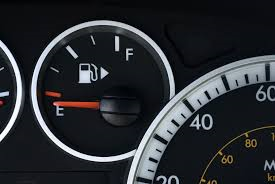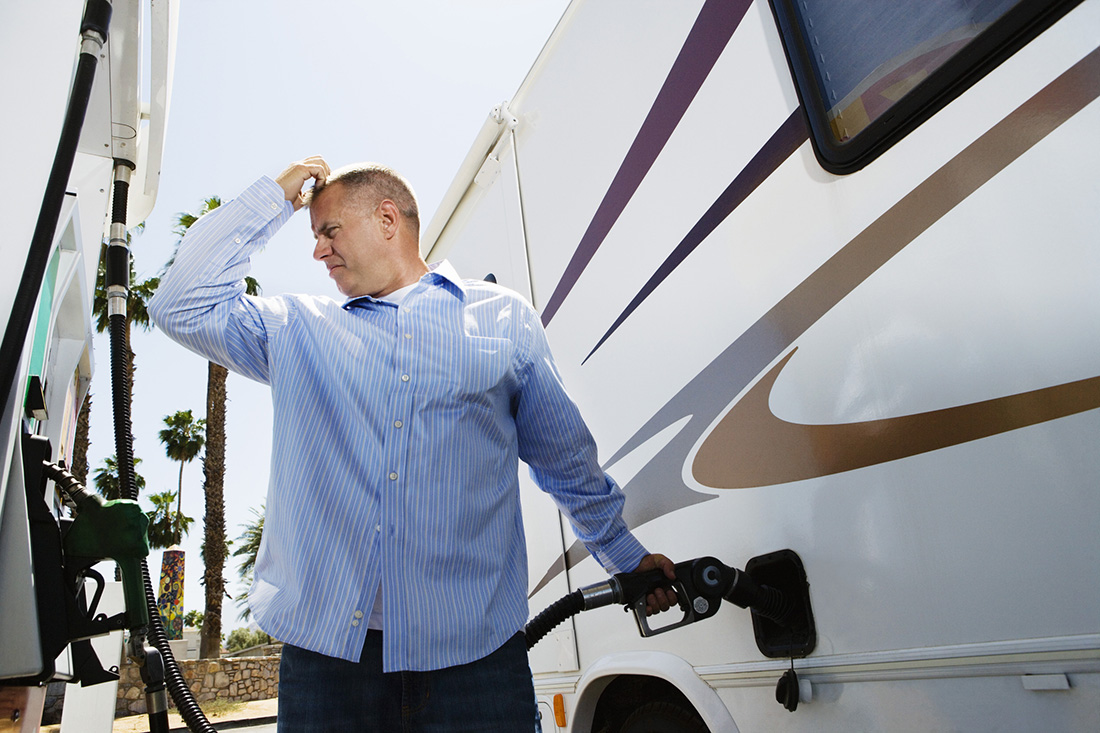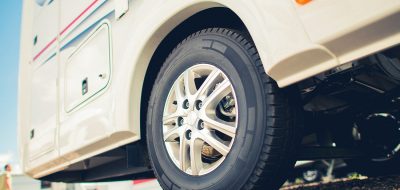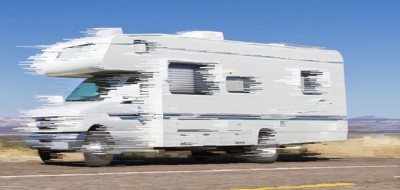|
RV fuel gremlins — finding the hidden factors that affect mpg. Part I of a series.
RV owners seek to reduce fuel consumption — it’s one of the things we all have in common. The financial savings, reduction of carbon footprint and enhanced peace of mind that come from consuming smaller amounts of fuel make RV travels more enjoyable.
Now, we all know the basics of reducing fuel depletion: slowing down, accelerating at a constant rate, keeping your tires aired up, etc. But we should look beyond the obvious. We need to dig deeper and examine the hidden causes and results. We should look at the effects of tire rolling resistance, grade resistance, aerodynamic drag, engine components, drive train losses and — the wild card — the human factor.
 Over the next few weeks, we’ll look at many of the factors that affect a vehicle’s fuel mileage. Many of these are hidden gremlins that nibble at the mpg constantly while you travel.
Over the next few weeks, we’ll look at many of the factors that affect a vehicle’s fuel mileage. Many of these are hidden gremlins that nibble at the mpg constantly while you travel.
RV Fuel Gremlins: Fact-Based Principles
First, we must look at the fact-based principles. These things “are what they are” and remain constant (information sourced from RV suppliers):
- Motorhome tires are not really broken-in until they have run 30,000 miles or more. Tires that are totally broken-in present less rolling resistance and get up to 7-percent-better fuel mileage than when they were new.
- Motorhome engines improve fuel mileage once they are broken-in; gasoline engines at about 10,000 miles and diesels at perhaps 30,000.
- Any speed above about 55 mph results in up to 0.1 mpg for each additional 1 mph.
- Rib-tread tires provide about 3 percent increase in fuel mileage compared to a lug type.
- Tire rolling resistance is the biggest factor when traveling at 50 mph or less. Aerodynamics becomes the most influence at speeds over 50 mph. (Assuming there is wind present).
- An idling engine can generally burn a half to one gallon of fuel per hour.
- Fuel conscience drivers get about 30 percent greater fuel mileage than the worst efficient ones.
Now these represent some factors that in many cases can’t be altered easily, if at all. While you may be able to limit your engine idle time, you can’t change the over/under 50 mph resistance factor.
Heed these factors, especially to understand the MPG you’re getting and how that’s affecting your fuel usage. Many drivers end up on the side of the road with an empty tank because they weren’t paying attention. That’s why we recommend RV owners invest in some form of roadside assistance, like a Good Sam Roadside Assistance plan, which provides, among other features, emergency fuel delivery in the event you break down on empty.
But there’s so much more when it comes to boosting mpg. Next week, we’ll examine the effects of fuel mileage in “Where the Rubber Meets the Road.”
Peter Mercer – With the RV Fuel Gremlins









Peter Mercer
Wow! Those are some pretty impressive fuel mileage numbers for any motorized RV. Your speed to fuel consumptions certainly show a dramatic difference. Thank you for sharing this with us.
Anonymous
Thanks for your helpful hints.
I have a 2014 RoadTrek Diesel with around 75,000 miles and on second set of tires.
Recently while on a trip to Florida from Arkansas, when I reduced the highway driving speed of my RoadTrek Diesel from 75 – 65 I increased my MPG from 19-20 to 21/22 mpg. When I reduced another step to 60-65 the MPG increased to a consistent 22-23. At 55-60 I’ve increased MPG to 23 and sometimes 24. At 50-55 on a recent long trip I got up to 24-25 mpg.
Yes it does matter which way the wind is blowing and how strong, and how heavy your foot is on the gas pedal.